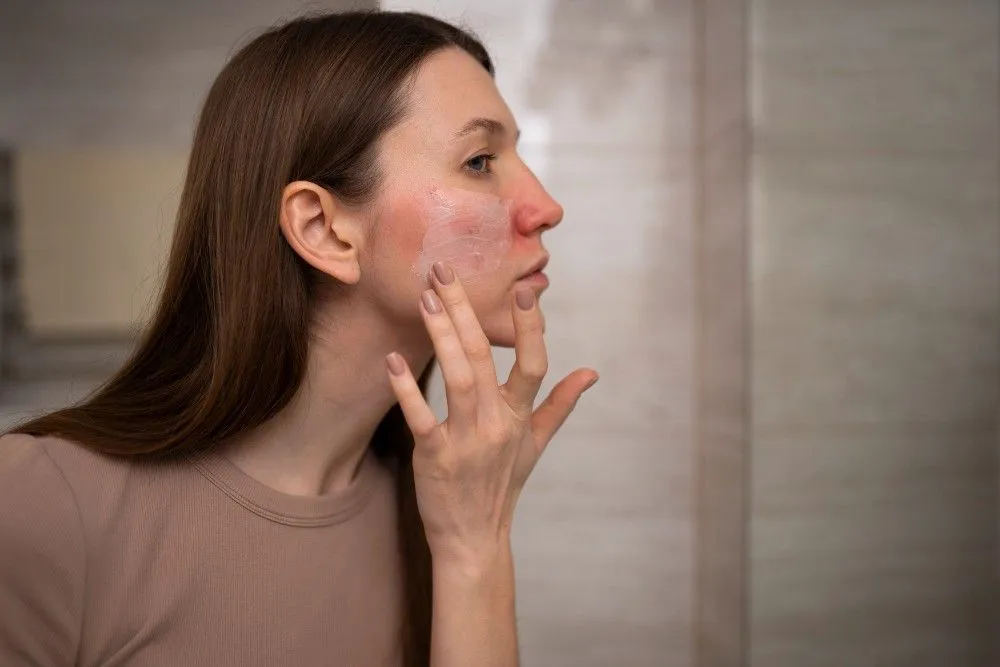Dealing with stubborn skin problems can be frustrating, especially when redness, itching, or flaking just won’t quit. If you've browsed the pharmacy aisle or searched online for relief, chances are you’ve come across clotrimazole cream.
Many people use it wrong. And when it doesn’t work, they blame the cream. Truth is, clotrimazole cream uses are plenty, but it only helps if you actually know how to use it right.
What Is Clotrimazole Cream?
Clotrimazole cream is an antifungal cream that tackles skin infections caused by, you guessed it, fungus. It belongs to the imidazole group, a class of meds that interrupt how fungi grow. When applied topically, it messes with the structure of fungal cell walls, making it hard for the fungus to survive.
It’s typically 1% in strength and works on the skin’s surface. And because it barely enters your bloodstream, it’s considered safe for daily use in adults. It’s sold over the counter in many places, but that doesn’t mean it’s foolproof. Use it wrong, and you're back to square one. Clotrimazole cream for fungal infection might sound simple, but it needs care and consistency.
Clotrimazole Cream Uses
Now let’s dive into the heart of it. The most common reason people reach for this cream? Fungal skin infections. And while that might sound like a small category, it’s not. This cream pulls its weight across several annoying, sometimes recurring skin problems.
Let’s look closer.
1. Athlete’s Foot (Tinea Pedis)
That itchy, burning madness between the toes? Classic athlete’s foot. It flares up from damp socks, gym floors, or just sweaty feet stuffed into tight shoes all day.
-
Signs: Peeling, redness, blisters, itchiness.
-
Application: Use the cream twice a day for about 4 weeks. Even if it looks better earlier, don’t stop.
2. Ringworm (Tinea Corporis)
Nope, not caused by worms. This is a circular, red, itchy rash that spreads outwards and can affect any part of the body.
-
Signs: Ring-like rash, raised edges, dry center.
-
Application: Apply clotrimazole 1 inch beyond the rash and continue for at least two weeks after it clears.
3. Jock Itch (Tinea Cruris)
Hot, humid places love fungus. So do groin folds. This form of fungal rash causes serious irritation and burning.
-
Signs: Red, moist patches on inner thighs or buttocks.
-
Treatment: Apply after cleaning and drying the area thoroughly.
4. Yeast Infections on the Skin (Cutaneous Candidiasis)
Warm, moist folds of skin, like under breasts or belly folds, often trap moisture, making them prime real estate for yeast.
-
Signs: Red patches, soreness, sometimes white coating.
-
Clotrimazole cream uses: Apply gently and let it dry before dressing.
5. Fungal Diaper Rash
Yes, babies get yeast infections too. When a regular diaper rash doesn’t improve, fungus might be the hidden culprit.
-
Signs: Redness with raised edges, tiny satellite spots around rash.
-
Usage: Pea-sized amount twice daily on clean skin.
Key Benefits of Clotrimazole Cream
Let’s break this down. You want to know why clotrimazole works so well, right? It’s not just about killing fungus, it’s how it does it.
Here’s why clotrimazole cream benefits make it a common pick for both doctors and regular folks.
-
Kills at the root: It stops fungi from forming ergosterol, a key building block of their cell membranes.
-
Targets the infection site: It stays where it’s needed, on your skin.
-
Low systemic absorption: Means fewer side effects.
-
Works on many fungi types: It’s effective against dermatophytes and yeast species.
-
Starts relieving itch fast: Most people feel better in 1–3 days, even though treatment should continue longer.
Now take a look at how it stacks up in terms of cure rates:
|
Condition |
Cure Rate (Topical 1% Clotrimazole) |
|
Dermatophytoses (Ringworm, Jock Itch, etc.) |
60%–100% |
|
Cutaneous Candidiasis (Yeast) |
That’s a strong number for a non-prescription cream. And remember, using it properly improves those odds. Miss doses? You’re inviting the fungus back for round two.
How to Use Clotrimazole Cream
This might sound boring, but using the cream the right way matters more than anything else. Think of it like brushing your teeth; if you don’t do it right, you’re wasting toothpaste.
Step-by-Step Instructions:
-
Wash the infected area. Use mild soap and water. Pat dry.
-
Clean your hands before and after using the cream.
-
Use a thin layer. No need to smother your skin.
-
Rub gently. Don’t press too hard or scratch the rash.
-
Let it breathe. Wait before covering the area with clothes.
Do’s and Don’ts:
-
Stick to the schedule, usually twice a day.
-
Wear clean, dry clothes every day.
-
Keep skin folds dry and aired out.
-
Don’t double dose if you forget one.
-
Avoid tight, sweaty clothing.
One of the most common reasons clotrimazole cream for fungal infection fails is inconsistency. People stop early or overuse it, thinking more is better. It’s not. Trust the process.
Possible Side Effects of Clotrimazole Cream
Like anything applied to the skin, there’s always a chance your body might protest a little. Most clotrimazole cream side effects are mild and go away when you stop using it, or reduce how often you use it.
Common Reactions:
-
Redness
-
Mild swelling
-
Itching or burning
-
Stinging sensation
These usually fade as your skin adjusts. But if it gets worse, stop and check with a doctor.
Allergic Reactions:
-
Rash spreading to new areas
-
Blisters
-
Shortness of breath (rare)
-
Severe irritation
If you feel like your skin’s getting angrier or new symptoms pop up, get it checked fast.
Long-Term Effects:
-
Skin thinning
-
Dry patches
-
Color changes in the skin
These happen when people use the cream too long without breaks. Always stick to a max of 4 weeks unless your doctor tells you otherwise.
Precautions and Warnings
Let’s not skip the small print. There are some things to avoid, or at least be careful with, when using clotrimazole.
Before Starting:
-
Don’t use if you’ve had allergies to similar antifungal creams before.
-
If pregnant or nursing, talk to your doctor first.
-
Don’t apply on open wounds, raw areas, or mucous membranes.
While Using:
-
Don’t combine it with other strong creams (like steroids) without checking first.
-
Avoid harsh scrubs, strong soaps, or exfoliators.
-
Don’t layer moisturizers over it right away. Wait at least 30 minutes.
-
Wash clothes, towels, and bedsheets often.
-
Avoid direct sun on treated areas.
And please don’t share it. Fungal infections spread fast, especially in shared households. Towels, razors, gym gear, keep them separate.
Final Thoughts
Clotrimazole cream uses go beyond the label. When used properly, it can treat skin fungus effectively and quickly. But that only works if it’s used the right way, for the full course, and not mixed up with other random skincare habits.
Stick to the basics, don’t expect miracles in two days, and always finish the treatment. If symptoms stay or get worse, it’s time to see a professional.
वारंवार विचारले
Can clotrimazole cream be used on the face?
Only if your doctor says so. Facial skin is sensitive, and misuse can irritate it further. Avoid eyes, lips, and open wounds completely.
What happens if you stop using clotrimazole early?
The fungus might still be alive in the deeper skin layers. Stopping early lets it return, and usually worse than before.
Is clotrimazole safe for children?
Generally yes, but always check with a pediatrician first, especially for infants or toddlers with diaper rash or skin folds.
Can I use moisturizers with clotrimazole?
Yes, but wait 30 minutes after applying clotrimazole. Otherwise, you dilute the cream and reduce its impact.
Does clotrimazole expire?
Absolutely. Always check the tube. Using expired cream is pointless; it won’t work and could cause irritation.

लिहिलेले







